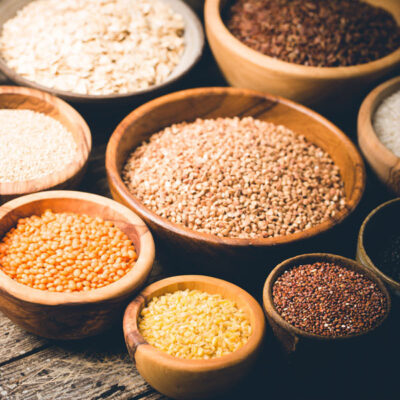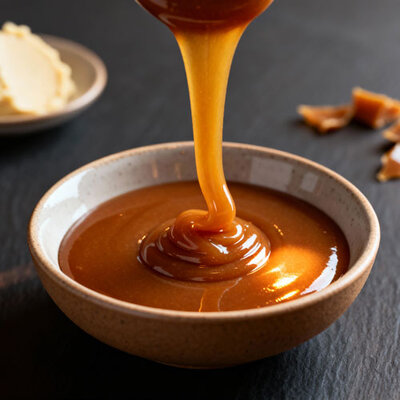An Introduction to Sourdough Bread
Author: Admin Date Posted:6 October 2024

Making sourdough bread does not need to become an obsession. But to be satisfying on all levels, and therefore truly successful, it does require a part of you.
This series of articles about sourdough aims to strike a balance between detailed understanding and easy-to-follow instruction.
It starts with the reason most people consider sourdough bread in the first place.
Is Sourdough Bread Actually Healthier?
The answer to that is well, 'yes', and 'no'. With a bit of 'it depends', for good measure. What it is not is a license to eat nothing but bread. Which as we all know is very easy to do when there is bread around. It is just too easy and too damn good. It is, however, an opportunity to eat good bread that may be gentler on your digestion and come with some surprising nutritional benefits.
Also, it is food from heart to hand to mouth, which is exactly as food should be.
Is Sourdough Bread Gluten Free?
Often the next thing people ask is 'Is sourdough bread gluten free?'. The short answer to that is no. No, it's not.
The longer answer is that many people with digestive issues can tolerate sourdough bread without complaint. We must stress that this is not the case for everyone so if you do have problems with gluten then proceed with caution and listen carefully to what your body is telling you.
A word to the wise. Commercial sourdough, however well-marketed, is rarely the same as a handmade artisan loaf. In most cases, it is certainly a step up in quality from your average loaf, but in beneficial terms, it will probably fall short of the mark.
If you want to explore the many possible benefits of sourdough, then the best way is to get your hands dirty and do it yourself. But before we look at how to do that, let's continue to understand why sourdough is good for you, and answer the gluten question in greater detail.
Why is Sourdough Bread Good For You?
As you are probably aware, sourdough has become synonymous with gut health. Every day we gather more detailed knowledge about the relationship between our health and the gut microbiome. A basic primer is all you need to get your head around it, but you can now find specific information down to the microbial level.
Begin with our guide to good gut health
First, let's look at the issues around eating bread, wheat, and gluten.
The issues with wheat and gluten
Some people are allergic to wheat proteins. They trigger an immediate reaction in the same way that a bee sting might, or eating nuts.
Then there are autoimmune disorders such as coeliac disease. The reaction is less immediate, yet no less severe. This type of reaction is specifically to gliadin, one of the gluten proteins.
Finally, there is gluten sensitivity. This is not down to one specific measurable response, or even one particular protein. A process of elimination (no pun intended) may ease symptoms, yet does not pinpoint the exact cause. The truth is that although attributed to gluten, the issues could be down to any number of other substances present such as fibre or sugars as in more generalised IBS.
Intestinal permeability
The lining of the gut provides a protective barrier that should prevent anything from getting through into the bloodstream that shouldn't.
When this barrier functions properly, it selectively allows nutrients to pass into the bloodstream while keeping harmful substances out. However, when the integrity of the gut lining is compromised (a condition often referred to as 'leaky gut') it may allow toxins, partially digested food, and other potentially harmful particles to enter the bloodstream. This can trigger inflammatory responses and contribute to a range of health issues. Factors such as poor diet, stress, and certain medications can all play a role in altering intestinal permeability.
How sourdough benefits health
Originally, before we changed the world with intensive wheat farming and modern breadmaking processes, all bread was fermented slowly with wild yeasts, using slowly grown wheat which was then slowly ground into flour using stones. You may have noticed that the underlying theme here is 'slowly'.
It is this slow fermentation, respecting the natural passage of time, that breaks down the flour and makes it more digestible.
Pre-fermenting foods for easier digestion
The long slow fermentation of sourdough does the same thing as it does in other fermented foods. It pre-digests some of the components. This means that some things that we struggle to digest (such as particular wheat proteins) are already broken down for us so that they can pass through the gut unchallenged.
Taking gluten as an example, the longer the fermentation time, the more gluten degradation occurs, and the easier it becomes for us to digest.
One job of the gut microbiome is to break down food into nutrients we can use. In effect, the friendly gut bacteria make more efficient use of our food. They also produce nutrients.
Sourdough as prebiotic
Sourdough is a prebiotic. It creates fibre, food, and nutrients that feed the friendly bacteria in our gut.
We have talked about the important role of grains in our diet before, as that of fibre-provider. Since the shift away from carbs we tend to think of fruit and veg as fulfilling all our fibre needs, yet do they? Adequately, and consistently? Sourdough bread is a reliable source of essential fibre.
Prebiotics are food for the friendly gut bacteria, of which fibre is a major contributor. Without this food, you cannot maintain a healthy gut microbiome.
The importance of fibre
Soluble fibre makes us feel fuller, helps to lower cholesterol and stabilises blood sugar levels.
Insoluble fibre (like bran) absorbs water and helps keep us comfortable and regular. By keeping the contents of the bowel moving, it keeps the bowel healthy and active.
We cannot digest the fibre in whole grains so it passes through to the large intestine intact. Here, the gut microbes break it down into nutritional compounds. SCFA (short-chain fatty acids) from fibre have been linked to decreased systemic inflammation. Which as we know is a major contributor to many chronic conditions, including obesity.
Another form of fibre is resistant starch, similar to soluble fibre. This is an excellent food source for gut bacteria, which break it down and release SCFA. One of which is butyrate which feeds the cells that line the colon. This in turn has a positive effect on intestinal permeability.
Resistant starch, like soluble fibre, creates a feeling of satiety and helps to slow the blood sugar response.
Slow-fermented sourdough, such as homemade sourdough, has been shown to contain up to 30% more resistant starch. (Incidentally, boiled potatoes left to cool are also a great source of resistant starch. Bring on the potato salad. Another vilified food that has a place in a healthy diet.)
It is thought that the longer the fermentation of the dough (which is why in more advanced sourdough making you learn to prove slowly overnight in the fridge) the higher the levels of resistant starch.
What Is Sourdough Made Of?
Sourdough is made from three basic ingredients: flour, water, and salt. The magic of sourdough lies in its natural leavening process, which relies on the wild yeast and beneficial bacteria naturally found in the environment.
Unlike commercial breads that use cultivated yeast for quick rising, sourdough utilizes a 'starter', a mixture of flour and water that ferments over time, capturing the wild yeast and bacteria. This starter acts as the natural leavening agent, contributing to the bread's distinct tangy flavour and dense, chewy texture.
What is a sourdough starter?
A sourdough starter is a living mixture of flour and water that is the foundation for traditional sourdough bread. This starter is rich in wild yeast and lactic acid bacteria, which work to leaven and flavour the bread.
To create a sourdough starter, equal parts of flour and water are combined and left to sit at room temperature, allowing the naturally occurring microorganisms from the surrounding environment to ferment the mixture. Over days or weeks, with regular feeding of fresh flour and water, it becomes increasingly robust, developing a complex, tangy flavour profile and a thriving colony of wild yeasts and friendly bacteria.
This fermented mixture acts as a natural leavening agent, enabling the dough to rise without the need for commercial yeast, and it also gives a unique depth of flavour and a chewy texture to the final loaf.
How to Make Sourdough
This section is more of an explanation of the process to prepare you for the steps ahead; a chance to consider some practicalities. Homemade sourdough is very much a lesson in patience. Stillness even. There's absolutely no rush.
Make your starter
This is the first step towards making your sourdough bread, and it could take several weeks depending on the conditions in your kitchen. Once your starter is thriving, it is ready for use and can go into the fridge until you are ready to begin.
Refresh your starter
When your starter lives, unfed, in the fridge, it will need a refresh before you move on to the next step. There, it lies dormant. The culture is alive, yet it needs food to become active. To refresh it you use a portion of the dormant starter, feed it with flour and water, and leave it alone for the day. The unused portion, known as 'discard', is thrown away.
You would do this first thing in the morning on day 1, the day before you are going to bake.
Make your levain
This is essentially the same thing repeated. You take a proportion of your refreshed starter, feed it with flour and water, and leave it overnight. This time though you will use the whole thing in your dough. It is also known as a 'preferment' which means pre-fermented flour. The rest of the refreshed starter goes back into the fridge to continue the cycle next time.
This is done last thing at night on day 1, the day before you are going to bake.
Making your dough
Day 2 arrives and it is time to make your dough, ready to bake bread much later in the day. Timings will vary greatly depending on how warm your kitchen is and how active your levain is. If you start at 8 am you can usually expect to have bread in the oven by 6 pm.
From there, the best thing to do is leave it to cool overnight. So you can think of the bread-eating day as day 3.
The whole day is not actively spent working the dough, but you do need to be around to coax it through the various stages and engage with the process. The stages are as follows.
Initial Mix
This is simply flour and water combined and left to rest for about half an hour.
Add the levain
The levain is mixed in, this time with kneading action involved, and then left alone for about two and a half hours.
Add the salt
The salt is now mixed in. Again with kneading effort. The dough now enters the stage known as bulk fermentation.
Bulk fermentation
Essentially the dough is left to develop for at least 3 hrs. During this time you need to pay it half-hourly attention and perform some gentle folding actions.
Shape the dough
The dough is shaped and put in the proving basket for the final prove.
Final prove
The dough is left alone to prove. This can take about 2 to 4 hrs.
Score and bake
The oven and the pot you bake it in are preheated, the dough is transferred to the pot, the dough is scored, and the bread is baked for about an hour and then left to cool overnight.
And that's it. And let me tell you, it is totally worth the time and effort you made. Even if the first results are less than perfect, you will feel super proud of yourself and still enjoy the bread you have made. It is rarely so bad that you cannot eat it.
Equipment Needed to Begin Baking Sourdough Bread
Although you can get by with pretty much no equipment you will get better results and therefore feel encouraged to keep baking, with a few bits of kit. Some of these things are invaluable in any kitchen and will also make the rest of your cooking infinitely better. Some, you will only use for bread making.
Glass Jars
I use Weck wide-mouthed 850ml jars as they are recommended. They are expensive but are crazy good quality and have two other things going for them. They also look great. The jars are straight-sided, which makes them easy to use and keep clean. They also have flat lids which can sit on top of the jar without a clip and rubber seal. So gases from the starter can escape and nothing can get in. Never seal a sourdough starter jar. It will explode.
Get two jars. One stores the sourdough, and is swapped for a clean one when you refresh. The other jar can also be used for the levain.
Probe Thermometer
A digital probe is needed to measure water and dough temperature accurately. You will find that a probe will improve your meat cookery game 100% too. They aren't expensive.
Digital Scales
Digital scales help you to weigh accurately, down to the gram. Something essential for all baking. They are pretty handy to have. Also, not expensive.
Cast Iron Pot (aka Dutch Oven)
I use my enamel cast pot for everything in my kitchen. It is hands down the best investment in kit I ever made. I use it for roasting, casseroles, sauces, and keeping meat warm from the grill. And, of course, baking bread. It is 28cm wide x 12cm deep.
A cast iron pot is not essential for sourdough baking. You can use a pizza stone. But the results are so much better in a pot that it not only gives you a better loaf, but the confidence that goes with it. The cast iron creates a higher, more even, heat than your oven and traps steam inside. It is like having a baker's oven inside your domestic one. The rise and the crust will be so, so much better.
Rubber Spatula
A rubber spatula helps to scrape things cleanly, such as the side of your sourdough jar. If you don't already have one you will find you use it all the time for everything. Mine is more like a flexible spoon, called a 'spoonula', which is far more useful and easy to use than a standard spatula shape. Trust me, you won't use anything else to stir things again.
Large Wide Bowl for Mixing
I use a big fruit bowl for mixing my dough, as it is shallow enough to get into for all the mixing and folding. You can use a standard mixing bowl (ceramic is nice and sturdy) but that is a bit fiddly. It seems to be a much better overall experience using good and solid kit like glass, ceramic, or stoneware for your sourdough baking.
Banneton Baskets
A proving basket is a must for the beginner sourdough baker. It helps with the final prove and gives a shape (and confidence) that proving on the bench will not give you. The recommended basket size for a single round loaf (boule) is 25 cm but I find a 23cm preferable. If you plan to make two loaves (a full recipe) then you will need two baskets.
Lame
A lame is simply a razor blade on a stick. Nothing else will give you a clean score. Scoring the dough before it goes into the oven, helps the bread to rise. And let's be honest, at the beginner stages you need all the help and encouragement you can get.
Plastic Scraper
A plastic scraper helps to scrape and shape the dough. A metal scraper is useful for cutting dough, and for cleaning the bench but is not essential.
The three items above can be bought as a kit. They won't be of the highest quality, but for the beginner baker is ideal.
Flour, salt, water
Choose organic, preferably stone ground, flour. I use white bread flour and wholegrain rye flour. Never use table salt but you can use fine sea salt. I use a flaked sea salt, finely ground in a mortar and pestle. Don't use bottled water, you can use tap water but preferably filtered.
Find out why organic flour is better for your baking
Embarking on your sourdough journey can be both exciting and rewarding. With a few essential tools and high-quality ingredients, you'll be on your way to baking delicious, homemade sourdough bread.
Remember, practice and patience are your best friends as you refine your technique. Don't be afraid to experiment and make mistakes—each loaf will teach you something new.



